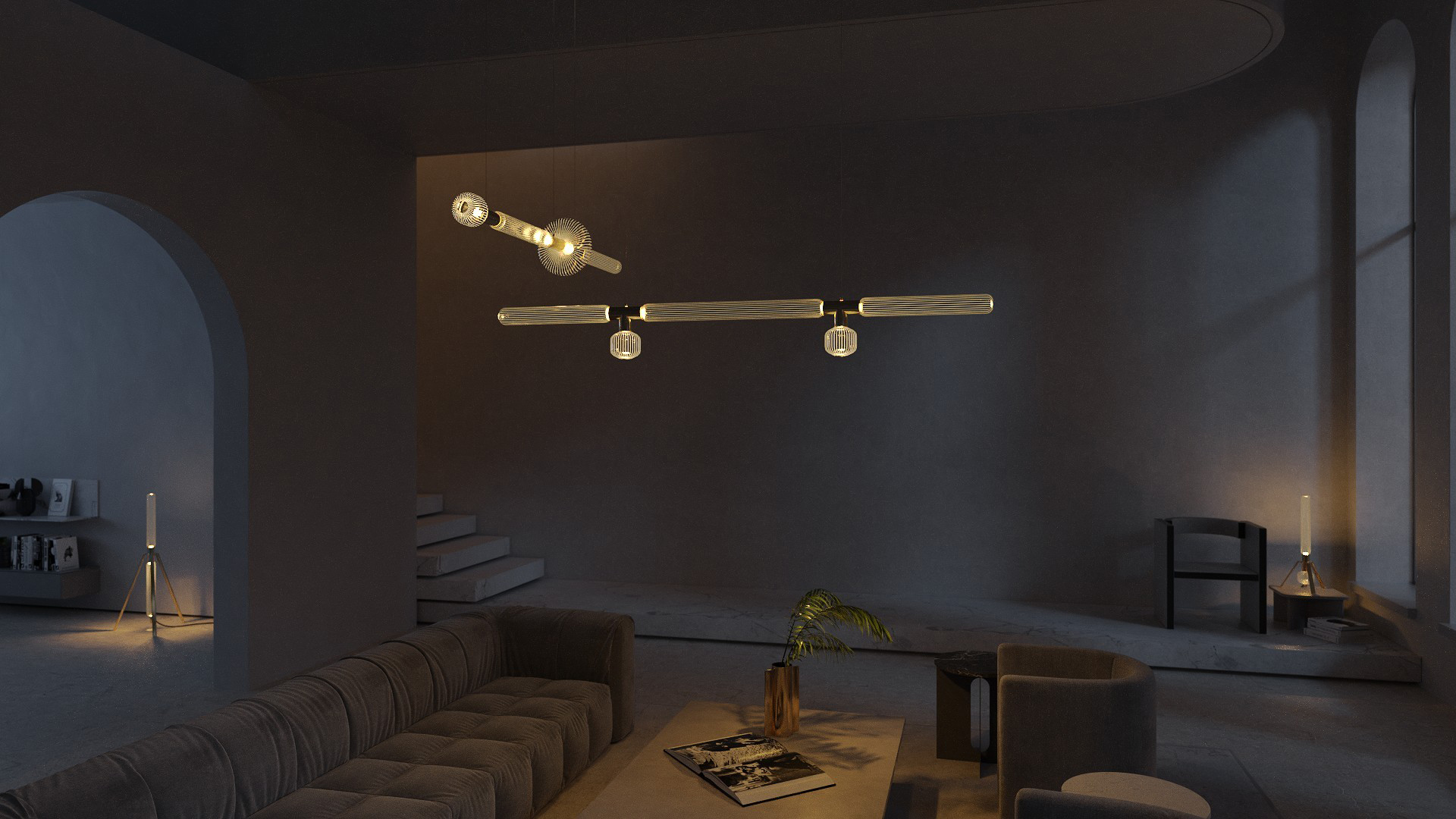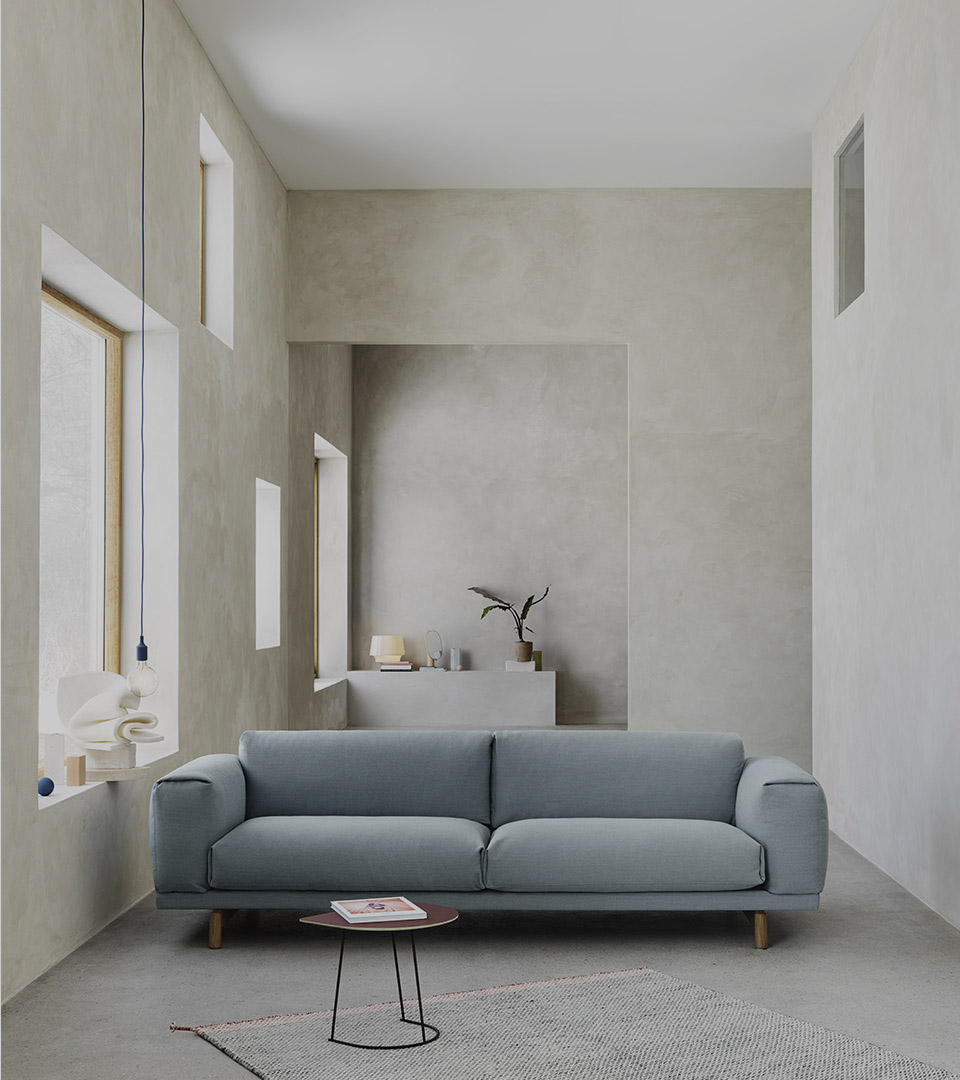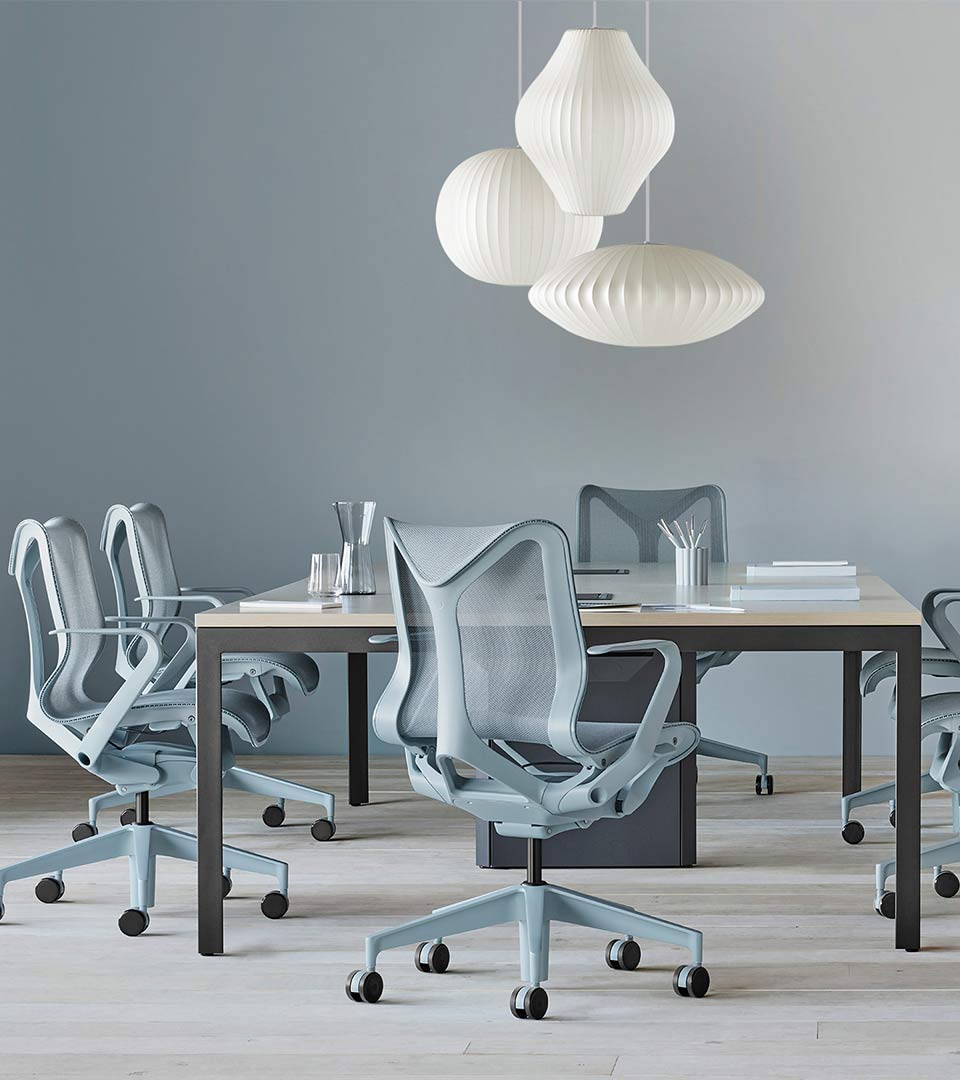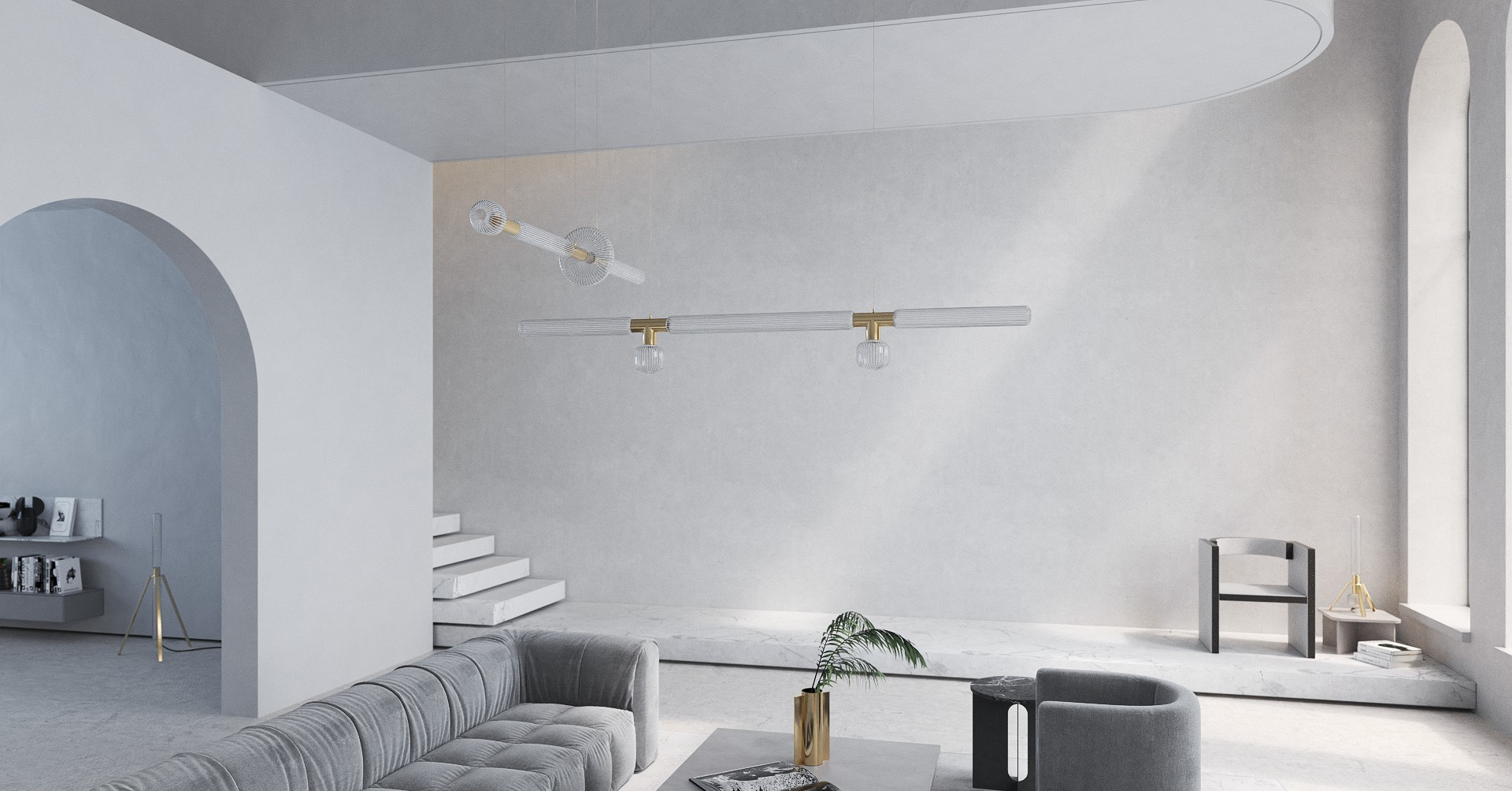Lasvit connects the know-how of skilled craftsmen with modern technology. LASVIT lighting installations shine in more than 2 200 hotels, private residences, cruise ships and other public and private spaces all over the world.
Beauty is not limited by size. Along with the large-scale installations Lasvit is known for, they have created dozens of lightings and glassware intended for smaller residential spaces. The portfolio features pieces from the most influential designers like Nendo, Zaha Hadid or Arik Levy. Lasvit works alongside designers to create works which tell a story closely entangled with the place for which it has been made. Explore the stories behind these three unique pendant lights.

Each piece, made alongside Lasvit's glassmakers, has been scaled-back to fit in better with contemporary interiors. "The idea of Neverending Glory collection came to us when we realised how many amazing old crystal chandeliers there are, and that it would be beautiful to bring them to a contemporary form and into modern homes," said designer Henry Wielgus. To create each pendant, Plecháč and Wielgus sketched the shape of the original chandelier while rotating it, blurring the details to create a smooth edge. Local craftspeople in Bohemia – a region recognised for its glasswork – then worked alongside the designers to create the shapes from wooden moulds.
The resulting collection sees five chandeliers available in white, opal, iridescent and smoke tones. "The pieces are bordering the edge of what is possible to do with human hands, whether in terms of the sizes of the hand-blown glass objects or in terms of precision and mastery," Lasvit said. "The large pieces of glass, for which even the wooden moulds are enormous, are so demanding to produce that it would not be possible to create anything bigger."

The Spacey Pendant Lamp by Czech designer Lukáš Novák for Lasvit sees three glass balls stacked on top of each other to resemble planets orbiting a central star.
"A sphere is the most perfect shape in the universe," said Novák. "I wanted to create a lighting design that pushes the limits of the sphere a bit further."
The three orbs are joined together by brass rings and topped off with a smaller, gold-coloured ball that connects the light to its sleek black fixture. Spacey comes in two variations – Eclipse, which features a slightly darker palette of greys and greens, and Supermoon, which incorporates bright turquoise and beige.
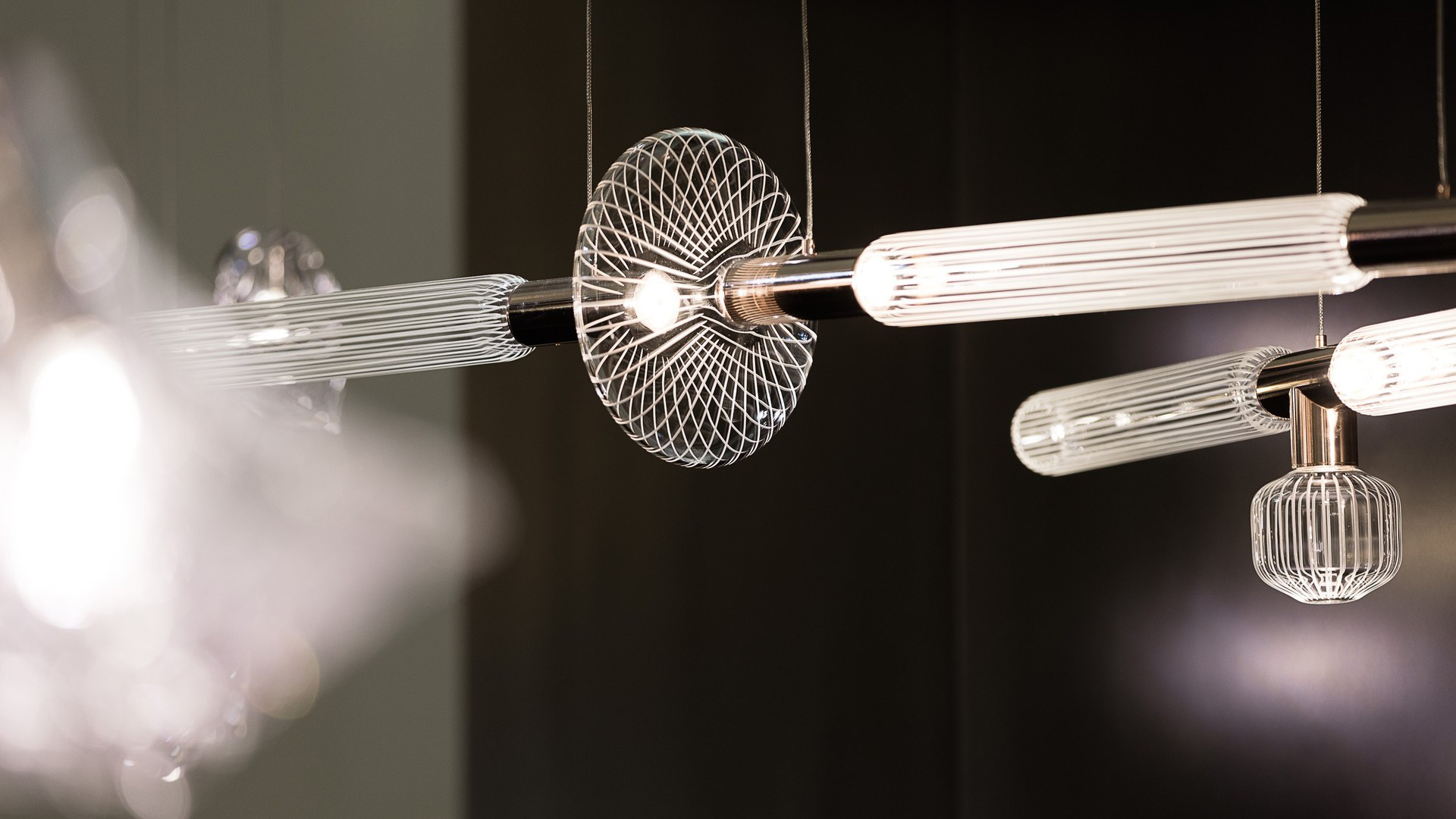
Yabu Pushelberg joined forces with Lasvit to create the slender cylindrical lights, shaped like sunbursts and elongated capsules, to celebrate the traditions of handcraft. Each of the glass bulbs in the Cipher collection is handblown, and hand-etched with clean-cut vertical lines, by craftspeople in the Czech Republic.
The individual crystal tubes erupt from champagne-gold polished brass fittings at the centre of the lights, casting shadows of their star-shaped forms across the room. Within the bulbs, light glows around the etched lines of the glassware, creating luminescent silhouettes.
Hidden LED sources within the brass connection points soften the bulbs' illumination as the light travels downs the etched lines. The longer cylindrical pieces project intricate patterns onto the walls and surrounding surfaces, as the light hits the finely etched lines.
The lights are on display at Lasvit's New York showroom, alongside Yabu Pushelberg's Otto glassware collection. The studio was initially commissioned by the glass manufacturer to design the single Otto collection. However, when faults in the crystalline glass prompted the designers to hold up the glassware to the light, they recognised the potential for a lighting series.
The many different detailing techniques utilised by Lasvit such as the hand etching echoes the "rustic qualities and the precise craftsmanship" of glassmaking traditions.
